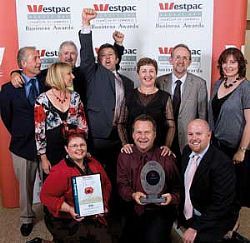KEEPING IN CONTACT
In any economic climate, it’s less expensive to invest in the customers you have than try to attract new ones. But what happens when your customer base expands and customers want to be contacted in different ways? Software tools can help and in more ways than one. Vikki Bland explains.
A couple of times a week I walk past a small self-owned store in my local shopping area and each time I remember that the owners have yet to get back to me on a query I made eight months ago. Obviously they’ve forgotten I exist, but rather than return and repeat my query I am on the lookout for the same goods from a different store. As childish as it sounds, I’m piqued that they’ve forgotten me and I know many people would feel the same. As wonderful as it is to have plenty of customers, meeting customer service and communications expectations can be a headache which is why so many businesses seek help in the form of contact management software. And these tools are often business critical. When you consider the cost of attracting customers in the first place through advertising or a hard won reputation, it’s obviously unwise to lose them at the first forgotten query. Similarly it’s not smart to miss a sales opportunity that links the right customer with the right deal simply because you have no way of contacting specific customers or knowing what their preferences are. Contact management software and services organise and store customer information and links specific e-mail messages, notes, appointments and tasks, to specific customers. The right software can marry up customer email and mailings to specific regions, as well as remind business managers of any significant customer dates on the horizon – such as the number of years the customer has been with the business, the number of times a product has been purchased or a service used; even customer birthdays. And more sophisticated software – often categorised as Customer Relationship Management (CRM) software – lets the business track the progress of sales activities and marketing campaigns, produces reports on customer activity, segments customers according to fields the business specifies, and targets promotional materials to specific customers. So, if you know a customer that bought one type of product or service will probably be interested in another, contact management software can let you create a list of customer opportunities by products. Contact considerations Ann Mayer, director of telemarketing company Telephos has been using software and telephony systems to manage customer contacts since 1975. She says she has watched these systems evolve over time, including a move to using the Internet and mobile and online technologies. “I have used a contact management tool in my business since about 1990 and assisted other companies to produce specifications for what they needed. I strongly believe in this commercial environment companies need to concentrate on customer retention and contact management software and practices will help them with this,” says Mayer. She says, unsurprisingly, different customers have different contact requirements and all have to be asked how they want to be contacted. The onus is on the business to make an effort to use the contact methods desired by the customer. Increasingly, this could be a text message or email instead of a letter or phone call; however phone calls and even facsimiles still have their place. Mayer says it’s important to plan workflow and set contact policies, for example agreeing the next contact step with a customer prior to completing the current contact. Another tip is to ensure there is a point to each contact. “Customers don’t like receiving a phone call where the salesperson or account manager says they’re calling ‘just to see how things are going.’ Contacts need a set objective – that is, what information or action to give or receive from the customer,” says Mayer. She says the number one reason customers stay with a business is if the business does what it says it will do. “It’s about account management; customers need to be reminded you are there. It’s about keeping in touch but not over-contacting. How do you know if you are over-contacting? Ask the customer, or listen to feedback from them.” Stewart Gibbs, manager for Microsoft Dynamics (Microsoft’s contact management and CRM software) agrees businesses need to be stringent in observing how and when customers want to be contacted. “If I am a loyal client and have been for some time, then I would expect interaction to be on my terms, not yours,” says Gibbs. He says New Zealand privacy laws prevent businesses from sending emails as unsolicited spam, which is why businesses commonly ask their customers for an email address. This enables the business to send a personalised email for contact, which Gibbs says many customers now prefer to a phone call. If the email contacts a link to a business website, it’s possible to use software tools to see which customers clicked through and to what parts of the site. “Don’t send a large email with too much information on it; instead make it easy for the customer to get through to the next stage of contact. One example used by [book seller] Borders is they send a voucher in an email and the customer prints it out and takes it in to the store,” says Gibbs. Adam Johnson of Savio Solutions (which sells and supports the Goldmine brand of contact management software) says small business owners are becoming smarter about whom they contact, when and why, and a contact management system is a key enabler. “A good contact management system allows you to contact the right people with a message that is relevant to them. Moreover, a well-used contact management system will capture information that would normally be held in someone’s head. Remembering a customer’s birthday or coffee preference can make all the difference and help you stand out in their mind,” says Johnson. Both Johnson and Gibbs say it’s also worth thinking about the potential power of contact management software used with mobile devices. “We are enthusiastic about mobile CRM, because it has so many applications for organisations of varying sizes and type. Sales reps can organise their days much more efficiently and companies that receive service requests can manage their response through mobile technology. For smaller businesses it can be as simple as replying to emails remotely and having the reassurance that such communications are all safely documented against contact records,” says Johnson. The right tools Most businesses begin a commitment to improved contact management by looking at the software options on the market and the vendors representing them, but Mayer says this is a mistake. “Look at your own business needs and specify what you want the software to do, and if you need it aligned with other software you have. The same principle applies to telephony software. Everything should be able to work together – if the business wants a report, it should be able to get it from the telephony system or CRM software,” says Mayer. She says questions to ask include how well the software is supported, and what it will be able to do for the business. It’s also important for staff to be trained in the use of the software so it is used to its best capacity. “This sort of software is definitely not a DIY thing. Most businesses don’t learn enough about their software and they would be tremendously more efficient if they did,” says Mayer. Gibbs agrees contact management tools need to be treated with respect. “Lack of training is the single biggest cause of failure with CRM systems. If people don’t understand what the software does, they get frustrated. Don’t just capture names and addresses when there is the capacity to capture more information,” says Gibbs. He says best practice in contact management is not software; it is how businesses develop mechanisms that relate to how they want to deal with customers. However, CRM products are capable of ‘predictive analysis’ of customer data and can provide workflow alerts. So if a customer has not been in contact by email or has not been tracked using the website for a set period of time determined by the business (and monitored by the software) the software will alert the relevant account manager so that a decision can be made on whether a different approach to the customer is warranted. Basic contact database products and simpler contact management systems can show the business when the customer last interacted with the business and may be able to capture details of the last contact information, says Gibbs, but CRM products tend to go a step farther by linking specific correspondence and information held in other business systems with individual customers. “Many basic contact management packages are not there to be integrated with other systems in the business. Beyond [those systems] it’s possible to progress from knowing who to send information to, to being able to build interaction with those customers.” He advocates extensive online research into software options, their providers and the kinds of customer stories they have on their websites. Examples include looking for customer testimonies that reflect the needs of your own business and talking to these customers in addition to industry peers and software resellers. Johnson warns that if contact information does not flow and is not being updated regularly then the value of the contact management system becomes limited. The best way for businesses to avoid this is to get their staff to buy-in the concept of contact management and customer relationship management through illustrating what’s in it for them. Examples include cutting administrative time, or linking salesperson commission to sales managed using the company CRM system. If implementing or planning a new CRM it always pays to involve key staff and end-users early on, so that they are a part of the decision process, says Johnson. “Too often we see managers, directors and business owners who are relying on technology to be their ‘magic bullet’ and inevitably they are disappointed with the outcome. Don’t underestimate the importance of your most valuable asset – your team.” Vikki Bland is an Auckland-based freelance IT writer. Email [email protected].




